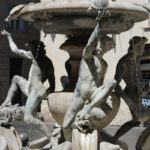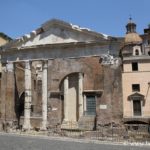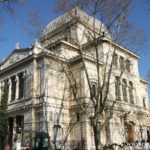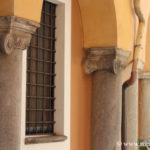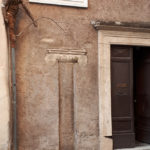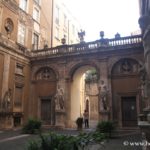The ghetto of Rome is nowadays a nice little neighborhood. It contrasts with the rest of the vast historic center of Rome its atmosphere of village more present and more quiet. It now corresponds to the Rione Sant’Angelo, between the Largo Argentina square with its sanctuary dating back to the early days of Rome, to the Theatre of Marcellus, and between the Tiber and Piazza Venezia.
These places of Rome were marked by the historic ghetto of the city, of which little remains of the big unhealthy, often flooded battisses, which were connected by bridges hanging over the dark alleys, and where the Jews were forced to live for almost three centuries! The district was indeed redeveloped at the end of the 19th century, creating pleasant living spaces.
However, Jewish culture still marks these streets, as in the dialect and gastronomy: fried artichokes (delicious!), fish soup, pastries, etc.
There are many small neighborhood bars and restaurants. Beyond its pleasant streets, one discovers their detours of beautiful works of art and architecture, including columns of medieval porticoes inlaid in the facades. Pass by Piazza Mattei, with the charming Turtle Fountain (Fontana delle Tartarughe), and also the pretty Mattei Palace (Palazzo Mattei) whose two surprising interior courtyards decorated with busts of Roman emperors and other antiques. Heading towards the Capitoline Hill, we pass by an important archaeological site, consisting of part of the Porticus Octaviae (Portico di Ottavia), and the Theatre of Marcellus. Near the Tiber, the Great Synagogue is a beautiful late 19th century building where one can discover a Jewish museum. Finally, Piazza Margana has beautiful medieval remains.
Route
Crossing the district from west to east, you can pass by these pretty sites and squares: Piazza Cenci, via di Monte de’ Cenci, Piazza delle Cinque Scole, then via del Portico d’Ottavia and the pretty Tempietto del Carmelo. You can then reach Piazza Mattei with the Turtles Fountain and the Palace, then reach the Porticus Octaviae, go through the Synagogue, the Theatre of Marcellus, the Piazza di Campitelli with its fountain and the church, then the pretty medieval square of Piazza Margana.Historical overview
For historical information, it was here that the popes decided to lock up the Jews by putting up a good part of this neighborhood designated as the ghetto, for more than 300 years! from 1555 to 1870, almost without interruption. Only one piece of the wall remains, with a few passages that correspond to the old doors.
Hotels and accommodation
Selection of good accommodations – hotels, chambers or apartments – sorted by price, inside or close to the Ghetto Area:
Guided tours
Photo gallery
- Great Synagogue of Rome
- Via della Tribuna di Campitelli
- Via Margana
- Palazzo Mattei
Map
If you see this after your page is loaded completely, leafletJS files are missing.







